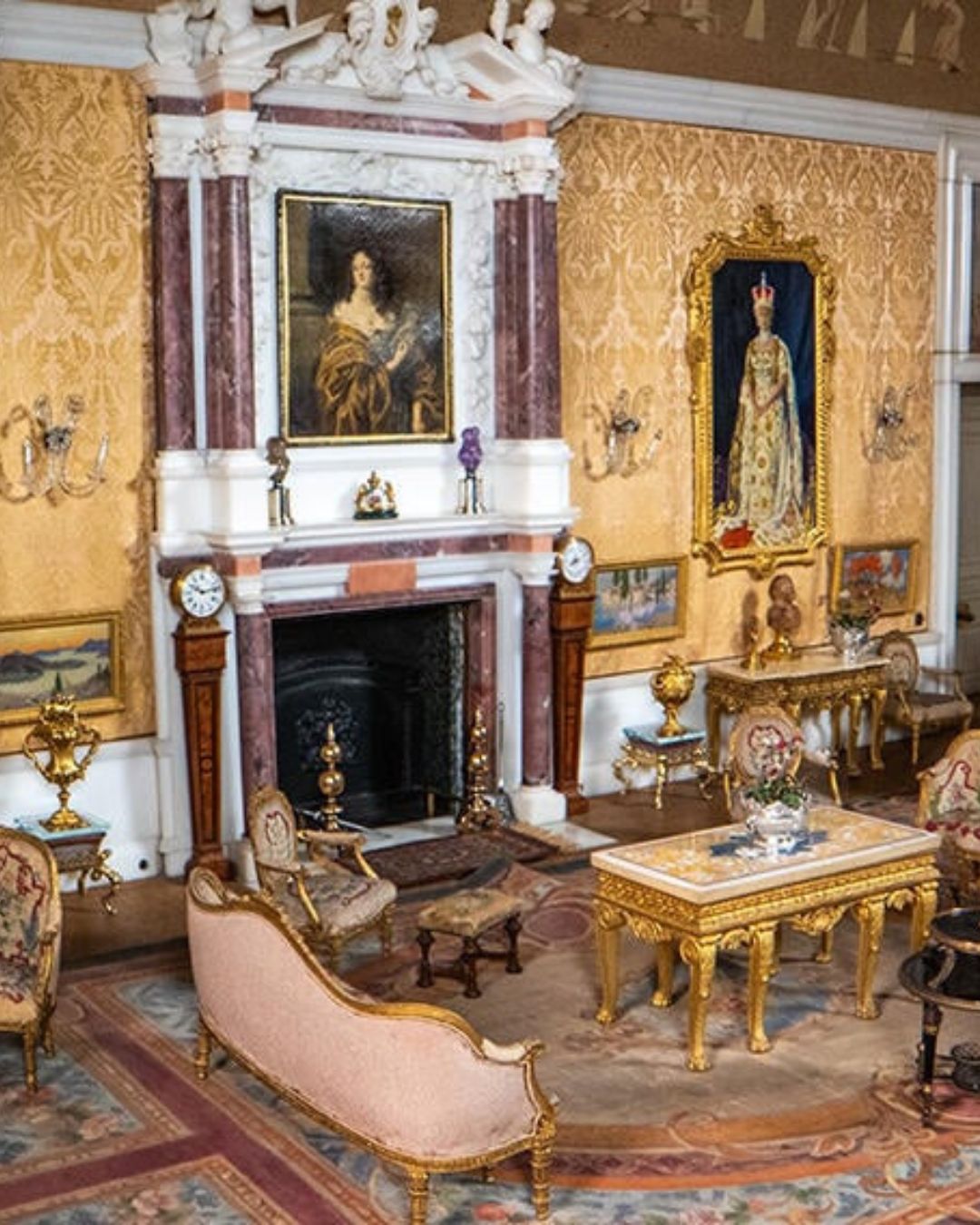The World’s Greatest Treasure Hunt: Discover the Diamonds of Namibia
The diamonds unearthed here are among the most extraordinary gems on the planet.

Namibia harbors some of the world’s oldest dunes, salt pans and gullies. Many are rich in minerals, including diamonds. (Adobe Stock)
Few diamonds on Earth have travelled as far as those discovered in Namibia. Formed billions of years ago in another part of the African continent, their successful journey along thousands of miles long rivers is a testament to the force of nature and the strength and durability of natural diamonds.
Namibia is the fifth-largest diamond-producing country in the world by value, and its diamonds command the highest price per carat. Revered for their supreme quality, Namibian diamonds are arguably the most exceptional and tough of all diamonds. Ahead, discover the remarkable history of Namibia’s diamonds and the value they create for local communities.
Meet the Expert

- Lisa Levinson is the Head of the UK at the Natural Diamond Council, where she leads with a mission to inspire emotional connections to natural diamonds, while championing the values and social benefits that define the diamond industry.
- She holds an MSc in Marketing from the Stockholm School of Economics, a Master of Commerce in Financial Management from the University of Cape Town, and is a certified Diamonds Graduate from the Gemological Institute of America (GIA)
A Landscape as Striking as Its Diamonds
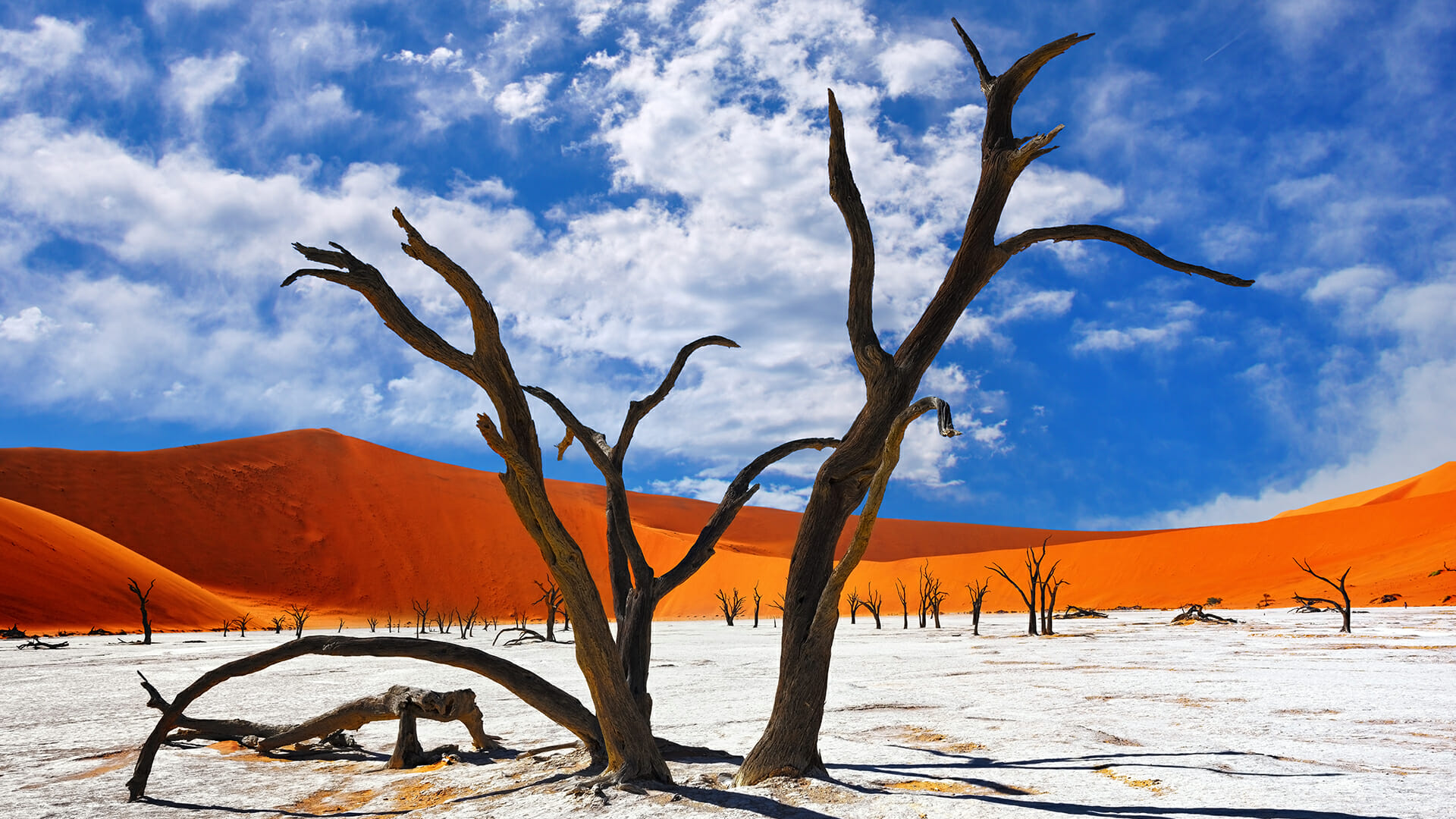
Namibia is a stunningly beautiful country with a long coastline on the Atlantic Ocean and vast stretches of desert that seem to roll into the ocean. The arid country’s impressive sand dunes are often seen as the backdrop in movies such as Mad Max: Fury Road (2015).
The country borders Angola, Botswana, South Africa and Zambia. Three of the neighbours are sources of diamond-bearing ancient volcanic pipes, an important detail to understanding the story of Namibia’s own diamonds,
What Makes Diamonds From Namibia Exceptional

Our planet formed most natural diamonds one to three billion years ago, and propelled them to the surface of the Earth millions of years later by violent volcanic eruptions. Imagine champagne bursting from its bottle, pushing both forwards and outwards once the pressure of the cork releases. In the same way, the volcanic eruptions formed carrot-shaped pipes, called kimberlites, and it is within these formations that we search for diamonds.
Here is the exceptional thing about Namibia: unlike the other top diamond-producing countries, it has no economically viable diamond-bearing kimberlite pipes of its own. Instead, Namibian diamonds are travellers and journeyed thousands of miles from their original volcanic birthplaces to reach their new home on the Atlantic coastline.
A Long Diamond Journey Across Continents
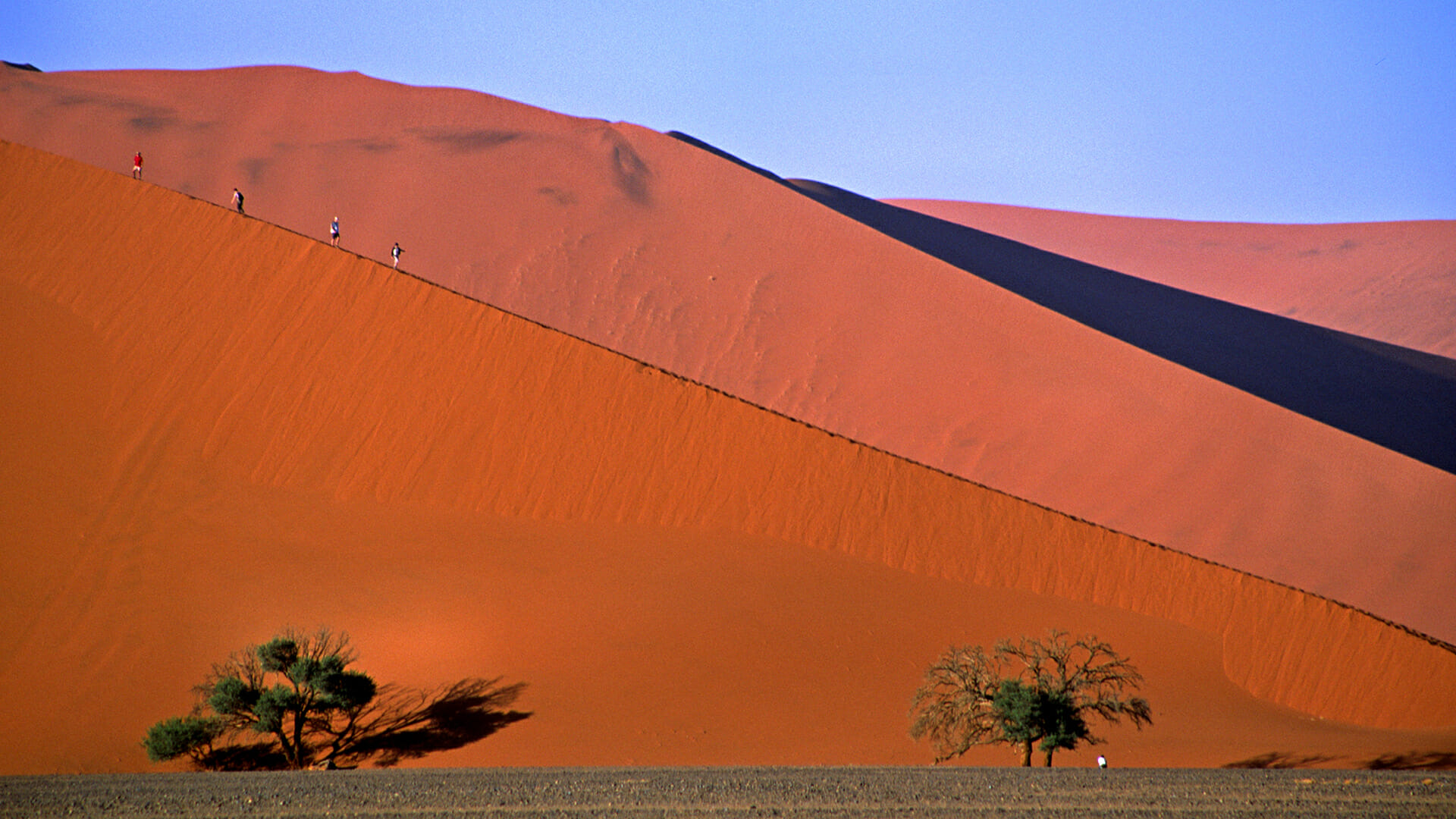
Millions of years ago, when volcanic eruptions reshaped the land, diamond-bearing rocks began to erode from the kimberlite pipes into the surrounding landscape.
Through exposure to wind and rain, the rocks eroded into smaller fragments, releasing the encapsulated diamonds. The diamonds tumbled through rivers for millions of years, travelling unfathomable distances across half the width of Southern Africa.
Geologists believe many of Namibia’s diamonds travelled westward through the Orange River. Stretching 1,300 miles, the Orange River begins in the Drakensberg mountains of Lesotho and ends in the Atlantic Ocean coast between Oranjemund in Namibia and Alexander Bay in South Africa.
The Birthplaces of Namibian Diamonds
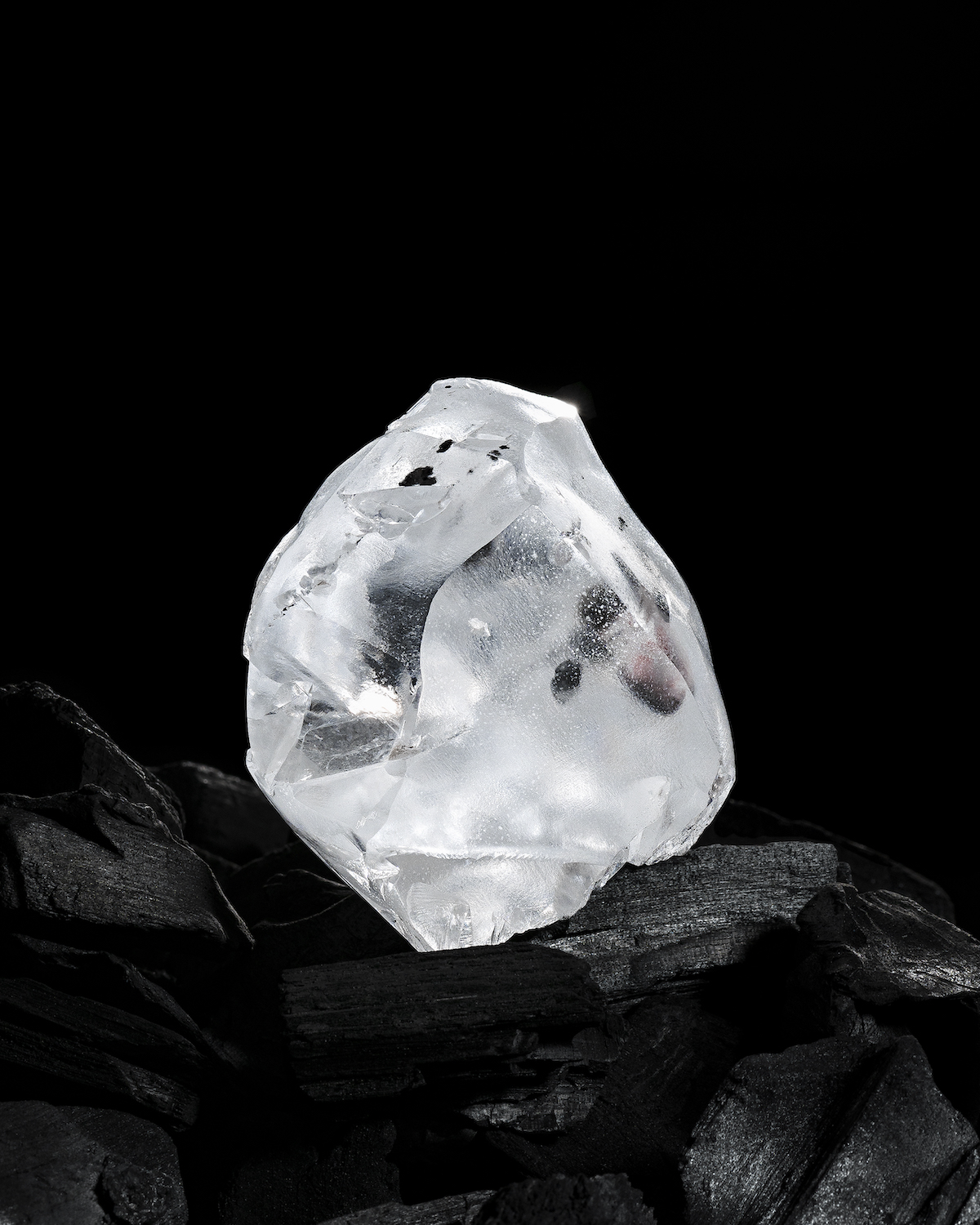
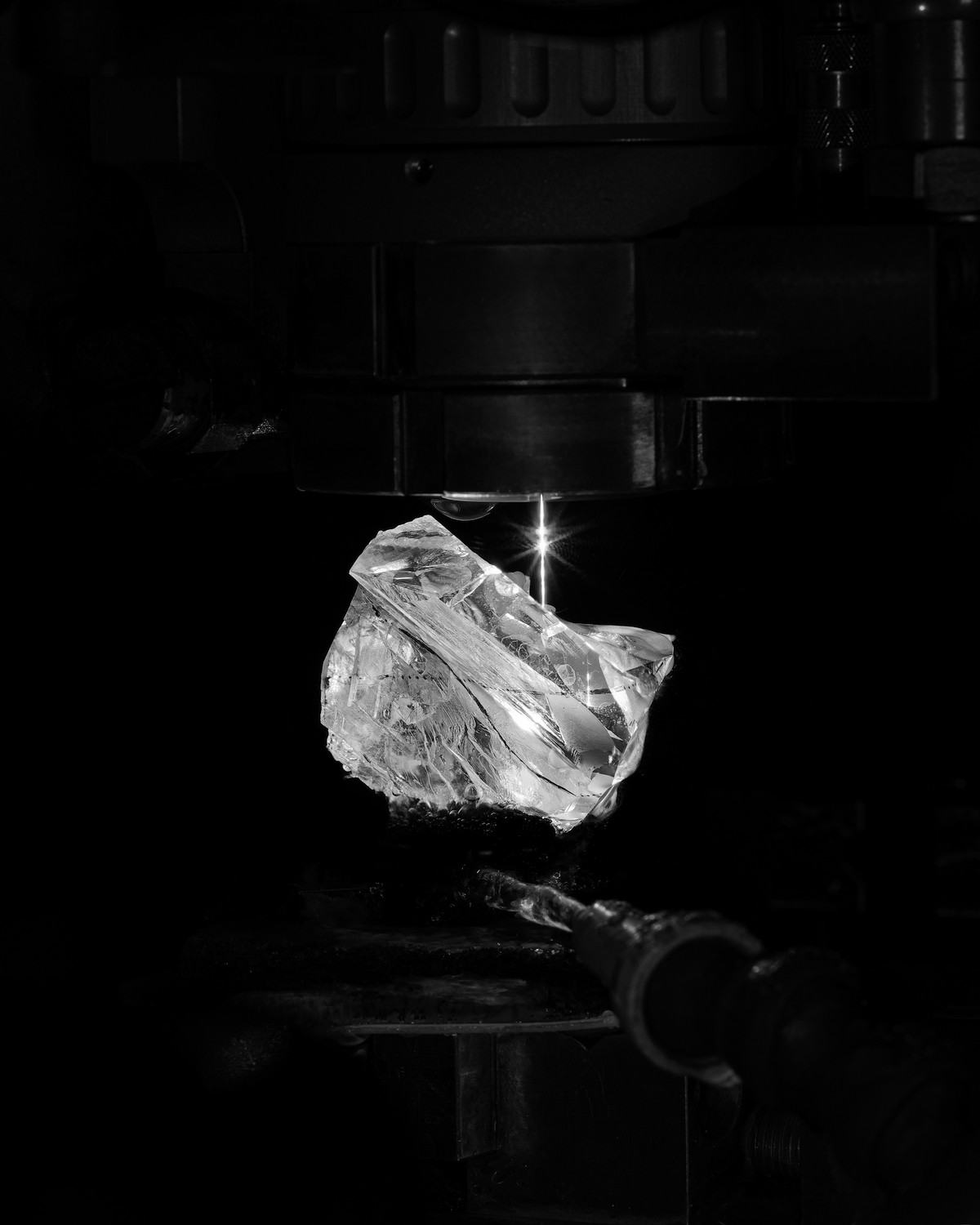
To truly understand these diamonds, one must look beyond Namibia’s borders. Some of the gems that eventually reached the coastlines began their journeys in neighboring regions, most notably the mountains of Lesotho and the storied diamond fields of Kimberley in South Africa.
Diamonds from Lesotho
Lesotho is a landlocked country within South Africa, famous for its striking mountains and high-value diamonds. Nestled high up in the Drakensberg mountains, it is lovingly nicknamed the “Kingdom in the Sky”, reflecting the altitude. Lesotho is renowned for its diamond mines, such as the Letšeng Diamond Mine, which produces extraordinarily large diamonds that command a high price per carat. Geologists believe that some of Lesotho’s diamonds journeyed to Namibia via the Orange River.
Diamonds from Kimberley in South Africa
Kimberley, in South Africa’s Northern Cape province, became famous during the South African diamond rush ignited by the discovery of the Eureka diamond in 1867. Geological evidence suggests that some of Kimberley’s diamonds are believed to have traveled through current and ancient river systems, eventually making their way to Namibia’s coastlines.
The Natural Strength of Namibian Diamonds
This astonishingly long journey is what makes Namibian diamonds so special. Carried by the force of the rivers and battered against the gravel of the riverbed, these stones endured a test of strength that few survived. Delicate and fragile diamonds broke along the way, leaving only the most resilient to complete the voyage.
As a result, these diamonds often have a rounded dodecahedral shape, which aided the journey through the Orange River, and they are often of “gem quality”. Remarkably, 90-95% of Namibian diamonds are of gem-quality, a proportion far higher than any other diamond-producing region.
The Namibian Diamond Rush of 1908
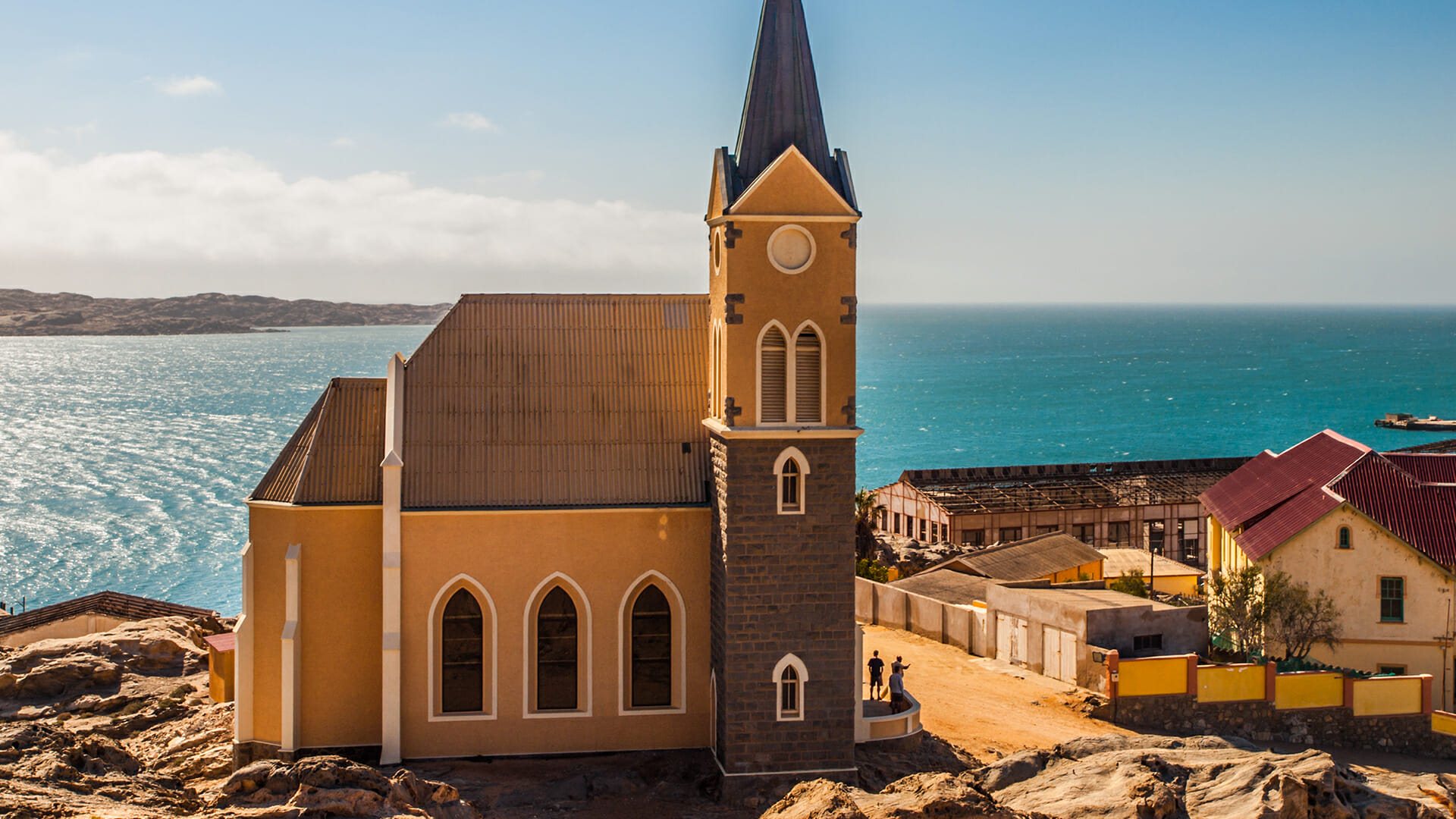
Diamonds were discovered in Namibia in 1908 when a railway worker found one near the coastal town of Lüderitz. A diamond rush followed across a huge field stretching 190 miles north from the Orange River and 60 miles inland from the Atlantic Ocean.
Some of the diamonds transported by rivers to Namibia can be found inland along current or ancient riverbeds, whilst others were swept out into the ocean. Miners recover the onshore diamonds through alluvial mining of ancient riverbeds, terraces and the shoreline.
For geologists, the search for diamonds is a treasure hunt where they look for clues in nature for where to find the treasure troves. For the alluvial deposits, they study geological patterns to figure out how the river direction has shifted to find pockets in dried-up riverbeds where the diamonds collected before the river changed course.
Specialized vessels recover these diamonds that reached the ocean use specialized technology to sift through gravel on the ocean floors. The diamond vessel operations are a marvel of technology and innovation; developed to find the precious stones whilst minimising the impact on the seabed and ensuring the ship withstands the extreme weather conditions of the Atlantic Ocean.
Diamond explorer James Campbell, CEO of Botswana Diamonds, explains how the search for Namibia’s diamonds tends to be north of where the Orange River runs into the Atlantic Ocean as the ocean current flows northwards, bringing diamonds along in the same direction.
Namibian Diamonds by the Numbers
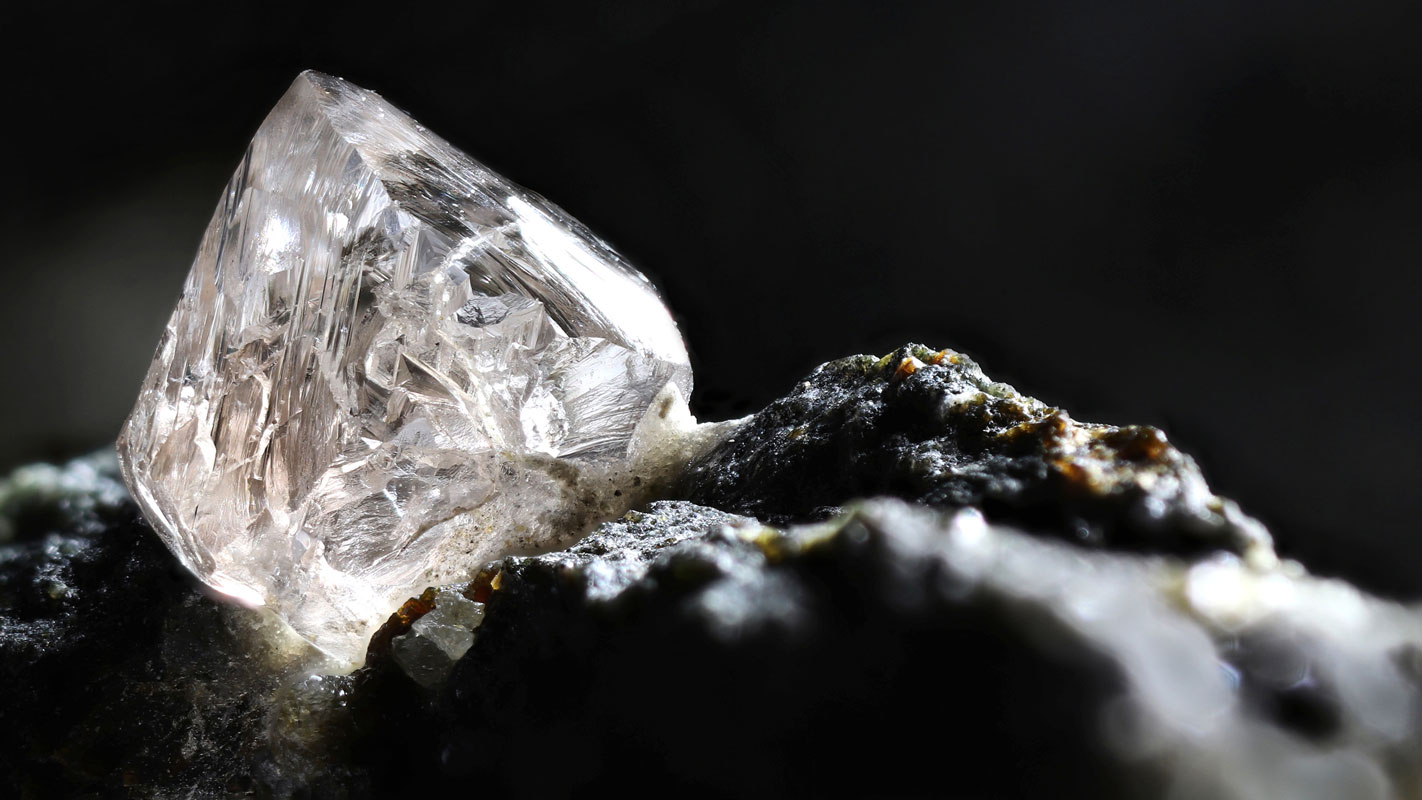
In 2024, Namibia recovered around 2.3 million carats of rough diamonds, most were discovered by the mining company Namdeb Holdings, which is jointly owned by the Government of the Republic of Namibia (50%) and De Beers Group (50%).
To visualize how few diamonds are recovered in Namibia each year, once cut and polished, their volume is equivalent to a beach ball. It is a reminder of just how rare and precious these gems truly are.
The Socioeconomic Impact of Namibian Diamonds

In the capital city of Windhoek, the Namibian Diamond Trading Company (NDTC), which is a 50/50 partnership between the Government of Namibia and De Beers Group, receives rough diamonds and sorts them into thousands of categories based on carat weight, shape and quality.
Most of these diamonds are exported to the neighbouring country, Botswana, where they are further processed and then sold to international diamond cutters. Still, close to $200m of rough diamonds are purchased annually by local diamond cutting companies in Namibia, helping to build critical skills, create employment, and ensure that more of the diamond’s economic value remains in the country through beneficiation.
One of the cutting and polishing companies is Andre Messika Diamonds, which combines diamond manufacturing with a strong social mission. In 2009, they recruited a sign language specialist to train people with hearing impairments in the art of cutting and polishing diamonds. Two years later, they onboarded and trained the first group. Today, the company also employs wheelchair users, making it Namibia’s largest private employer of people living with disabilities. In 2025, employees received a quarter ownership of the company, furthering its commitment to the local community and team.
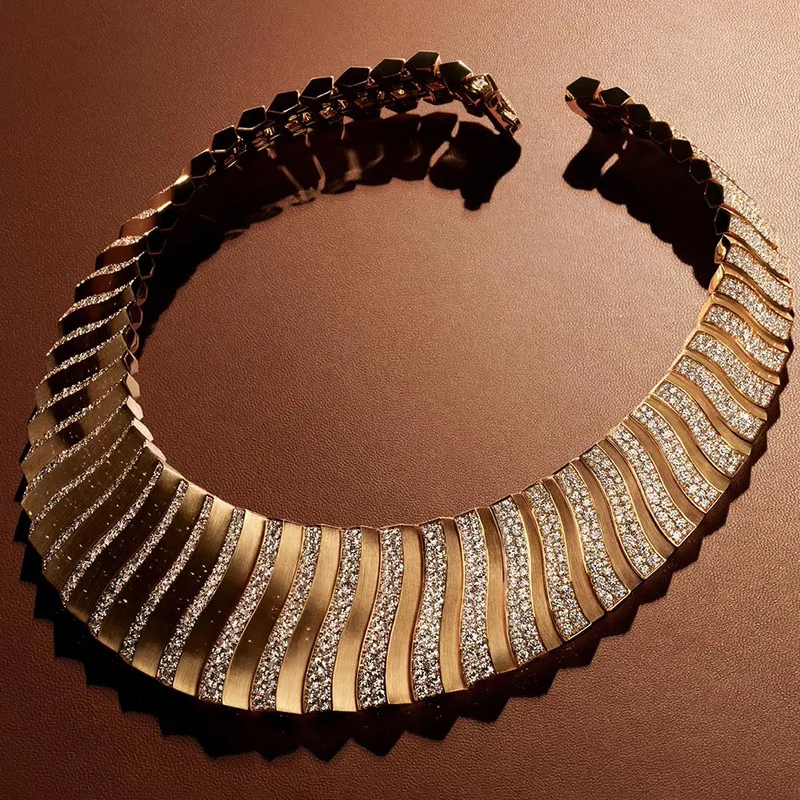
The polished diamonds crafted by Andre Messika Diamonds make their way to some of the world’s most famous diamond jewelry brands, such as the Parisian Maison Messika, led by Valérie Messika, daughter of Andre Messika, linking Namibia’s gems story to a new generation of diamond high jewelry.
Natural diamonds are an important part of Namibia’s economy, supporting thousands of jobs both directly and indirectly. Beyond employment, the industry contributes through tax contributions, infrastructure investments, and support to local communities.
The largest employers, Namdeb Holdings and NDTC, together employ over 3,600 people in a diverse range of roles, spanning from mining engineers to diamond sorters and environmental scientists. In 2024, their combined tax payments and economic contributions exceeded half a billion dollars, highlighting the diamond sector as an important contributor to the country’s economy.
Namibian Sustainability and Innovation

The diamond sector spearheads many innovative programs that range from renewable energy to conservation that support Namibia’s sustainability journey.
In 2024, Namdeb Holdings partnered with NamPower, the national electric power utility company, to develop wind power plants that will help supply energy for diamond mining operations and potentially feed into the national grid.
Off the coast of Namibia, there is a pioneering initiative tackling the challenges around carbon emissions from another angle—through carbon capture. Supported by a $2m investment by De Beers Group, Kelp Blue cultivates giant kelp forests that absorb carbon dioxide from the ocean and atmosphere. Once the kelp is fully grown, the top canopy is harvested and processed into a fertilizer that can be used by agricultural companies.
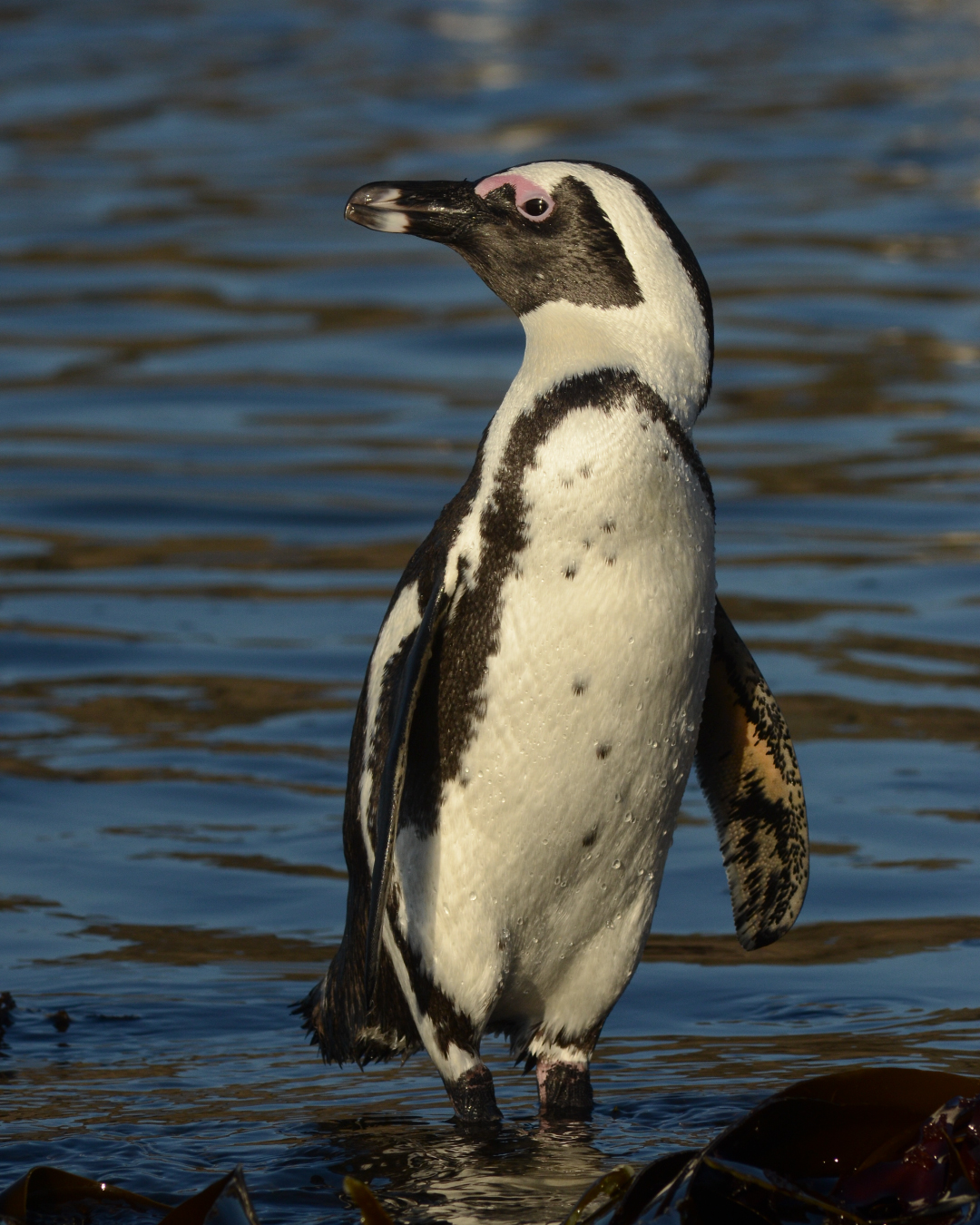
Another celebrated initiative is the Namibian Foundation for the Conservation of Seabirds in the coastal town Lüderitz, where African penguin populations are monitored and protection programs are developed to ensure access to food and minimise the impact of oil spills.
These efforts illustrate how Namibia’s diamond industry not only in economic growth, but also to a sustainable future for the nation’s people, wildlife, and environment.
A Country of Rare Treasures
The story of Namibian diamonds is one of survival and beauty, shaped over billions of years, carried across continents, and revealed by both nature and human ingenuity. Their journey is unlike that of any other diamond, which is why they are so valued today.
But beyond their brilliance, these stones also reflect Namibia itself: a country defined by striking natural landscapes and a vision for the future that blends economic strength with sustainability.


